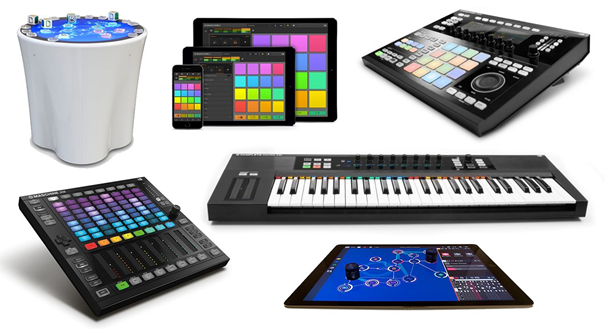From Spark to Song

October 22, 2025
The history of music is a story of continuous invention, from simple bone flutes to the complex mechanics of a piano. But no development shook the foundation of sound quite like the marriage of music and electricity. This collaboration, born of technological curiosity and a hunger for new sonic textures, didn't just amplify existing instruments—it created entirely new ones, forever changing the soundscape of the 20th century and beyond.
But what was the very first instrument to bridge the gap between science lab and concert hall? And what spark ignited this revolutionary idea?
The Pre-Electronic Trailblazers
Before the true "electronic" instruments arrived, there were "electrical" experiments, where inventors sought to harness the new power of the age to affect existing acoustic instruments.
As far back as the 18th century, devices like the Denis d'or (1753) and the Clavecin Électrique (1761) used electricity as a novelty to enhance the sound of strings or activate plectra. These devices were electrically assisted, but the sound itself was still produced acoustically.
A more significant leap came with the invention of the Musical Telegraph by Elisha Gray in 1876. A by-product of his work on the telephone, Gray discovered he could control sound from a vibrating electromagnetic circuit, effectively creating a basic oscillator. This was one of the first instruments to generate a musical tone through purely electric means, though it was largely impractical for performance.
Then came the enormous, 200-ton behemoth of Thaddeus Cahill: the Telharmonium (patented 1897, fully operational 1906). Using massive rotating generators, or "tonewheels," it generated electrical audio signals through additive synthesis, intending to stream music to subscribers over telephone lines. While visionary, its colossal size and complexity made it a commercial failure.
The True Revolution: The Theremin
The birth of the modern electronic instrument—one that generates its own sound waves purely through electronic means—is often credited to the invention of the Theremin.
The First Truly Electronic Instrument
The Theremin was invented in October 1920 by Russian physicist Leon Theremin (born Lev Sergeyevich Termen). It is widely considered the first successful and commercially produced electronic musical instrument.
Its most captivating feature is what makes it instantly recognizable: the performer plays it without ever touching it.
How it Works: The Theremin features two metal antennas. The upright antenna controls the pitch, and a loop antenna controls the volume. The player moves their hands in the electromagnetic fields surrounding these antennas. This changes the electrical capacitance, which in turn alters the frequency of two radio-frequency oscillators inside the instrument. The difference between these two frequencies is an audible signal, a ghostly, oscillating tone that can glide between notes.
The Idea Born from a Spy Device
What makes the Theremin's origin story so compelling is that its musical purpose was entirely accidental.
Leon Theremin was not initially trying to invent a new musical instrument. He was a scientist at the Ioffe Physical-Technical Institute in Petrograd (now Saint Petersburg), and his research was focused on a very different problem for the Soviet government: proximity sensors. He was developing a device that could use an electromagnetic field to detect objects entering a certain zone—essentially, an early motion detector or security system.
While working on this military technology, Theremin noticed a peculiar side effect. When he moved his body in or out of the electromagnetic field of the device's radio frequency circuit, the tone it emitted changed. The movement of his hands seemed to control a distinct sound. He realized that this "bug" in his proximity sensor was, in fact, a revolutionary new way to create music.
Theremin famously articulated his vision to a musicologist: "I conceived of an instrument that would create sound without using any mechanical energy, like the conductor of an orchestra."
This accidental discovery—that the human body could interact with an electromagnetic field to control sound frequency and amplitude—unlocked a new universe of musical expression. The ethereal, pitch-bending tone of the Theremin soon mesmerized audiences across the world, proving that music could be made not just with strings and wood, but with the invisible power of electrons.
The legacy of the Theremin paved the way for every subsequent electronic musical innovation, from the revolutionary synthesizers of Robert Moog to the digital audio workstations used by modern producers, solidifying its place as the original instrument of the electronic age.
—------------------------------------------------------------------------------------------------------------------------
Want to give your branding a big shot opportunity with strategic execution? Connect with us on
contact@upshotbrandmedia.com or on call at +91 8962429492
Tags:





